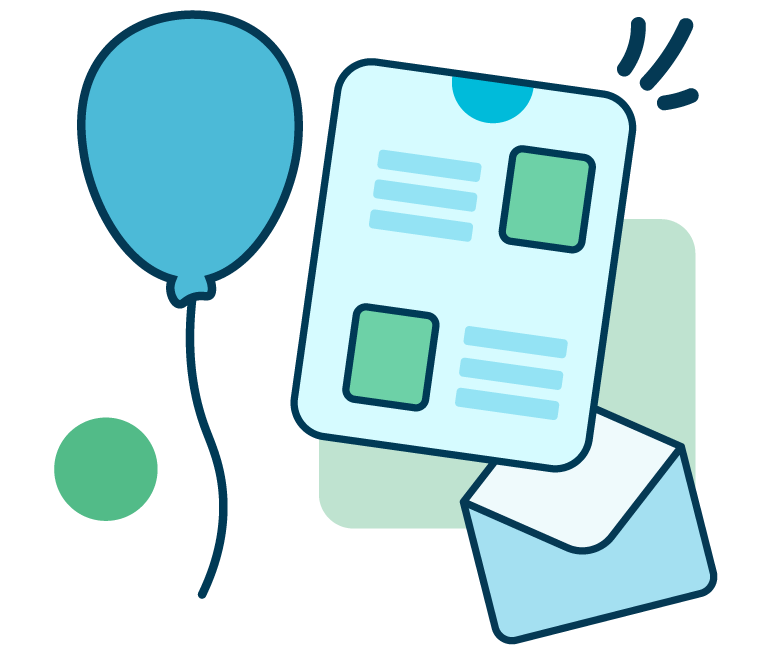Newsletter: the queen of the media diet

Over recent months, here on the MailUp blog, we’ve analyzed the Substack phenomenon. We delved into the success of newsletters in providing information and the rise of platforms for managing subscriptions to these periodic bulletins. Today, we revisit the subject to examine all the details and consequences of this rise. Domitilla Ferrari, from her experience, will support and accompany us in an in-depth analysis divided into 3 episodes. She will deepen the following:
- how newsletters have become the primary source of content dissemination;
- how the rise of these magazines is affecting the market and the use of other information media, and
- how adopting this channel may benefit your business.

From developing integrations to strategic support, from creating creative concepts to optimizing results.
Who’s Domitilla Ferrari?
Domitilla Ferrari is a lecturer in Digital Communications at the University of Padua. She lives in Milan, where she works as a B2B Chief Marketing Officer. She holds a degree in Psychology of Marketing and Communications and an MBA from the Bocconi School of Management. She’s one of Italy’s most influential marketing and digital experts. Since 2003, she has written the blog Semmersuaq, and since 2012, she has sent out a newsletter to about 5,000 communications professionals.
Considered a celebrity in the field of networking, she believes that the world is small and connections are a gift. She wrote about it in “Two and a Half Degrees of Separation: How Networking Facilitates the Circulation of Ideas (And Makes the Economy Run)” (Sperling & Kupfer, 2014), in “If You Write Something, then Make People Read It: The Relevance of Standing Out on the Web” (Sperling & Kupfer, 2015), and in a 10-part series on Storytel.
From the media diet headline to the in-depth study
How much time do we spend online? My answer is: all day. We have pockets, and we use them for keeping a constantly connected phone—yes, I still call it that. None of us ever really unplug.
Push notifications come to us from everywhere: Messenger, Facebook, WhatsApp, Instagram, and so on. I quite possibly cited them in order of frequency of use. Let’s check it out.
Every year, We Are Social publishes data on Internet use in the world. According to its Global Digital Report 2021, 50 million people access the Internet and 41 million are active on social media in Italy every day. We are connected for over 6 hours a day to the Internet, and we spend almost 2 hours on social networks (98% of us do it from mobile devices).
Among the most used platforms, YouTube (right, I forgot it), WhatsApp, and Facebook all exceed 80% adoption. Instagram and Messenger are running after them, while TikTok has doubled its figures and—just now?—Telegram enters the ranking.
What do we do online? People consume content, mostly video (93%). But also, in the last year or so, they have consumed audio (with 61% listening to music via streaming and 25% following stories and news via podcasts). Also, people play games, as 81% of Italians admit.
I’m not in this 81%. But what do I do online?
For me, the Internet is not a medium. As I always say, it’s a place where I read and interact.
Indeed, the Internet isn’t just a place to access videos, games, and songs. It’s also for receiving and finding information. Let’s not forget that. The news comes to us from the Internet through our social media network or the sources we’ve selected by liking or subscribing to them. Otherwise, we actively look for news on information sites.
In the first case, it’s all push: your contact or a site you follow has just published some news. It happens all the time. In the second instance, it’s rather a pull search: we aren’t passive receivers. We personally take action to carry out a search. This is less common and, when it happens, it’s a more selective, planned behavior. It requires a greater amount of time and focus.
When we access news or content in push mode, we move from one news to another without leaving room for further study. It’s like a snack: “hit and run.” Our media diet is made up of many small tastings: the headlines.
The newsletter’s role in the media diet
“We’re used to moving freely and kind of binge watching between different social media networks. This is distracting and raises the problem of distributing our attention in a continuous flow of content and sources. Plus, of course, it may happen that we decide to find specific information or news for ourselves. Going for it is nice. However, moving from one thing to another is complex and tiresome. This is why we increasingly need to land on islands—like newsletters—that guarantee a content dive. Also, a newsletter implies care and quality. This is one of the characteristics that help keep an ongoing connection with information that comes to you. You don’t need to look for it,” explains Giovanni Boccia Artieri, Professor of Communication Sciences at the University of Urbino.
The Web works like this: you need to be there in order to end up on the intangible shelves where readers find what they want to read. Relevance gets you on the shelf. In fact, today, it’s no longer just a matter of using the right keywords when writing. Content should no longer be optimized just for search engines and customers like us who hope to find the answer to our Googled question by absentmindedly reading content. Today, more than ever, it’s a matter of conquering one’s own audience. This audience is personal, attentive, and curious because each of us is a medium that produces and distributes content, images, and thoughts, that argues, and that spreads news.
In this context, the newsletter—let’s cite Boccia Artieri again—stands out in the media diet of each of us. If I don’t have time to read it, then I can keep it aside to read it later. e.g. on weekends, like people used to do with old newspaper supplements.
Vanity figures: story of a downturn
Years ago, a well-known publishing house made an interesting (yet unoriginal) operation. It launched a new publication in a bundle. Two magazines came for half the price of one. Such an operation is fairly frequent in the publishing market. It aims to increase the advertising audience. Subscribers, me included, immediately increased. After 3 months, I had opened 1 out of 6 issues just to leaf through a few pages. I decided to unsubscribe: there was more effort in recycling it than in reading it.
According to data from MailUp’s 2021 Statistical Observatory, newsletters grow steadily (+0.44% in Italy). The figure of newsletters sent in Italy is 9,840,670,037, which is a lot. However, it’s even more impressive that they represent almost 70% of the total volume of emails sent in 2020. This positive trend with growing performance indicators (open rate, CTR, and CTOR) also brings big news. We’re becoming increasingly selective and, when we choose to read content, we really do it. This isn’t like TV ratings or social media networks, where views don’t correspond to the public’s real focus.
We should always read figures carefully. We need to understand which figures represent our success index. “One of the most critical marketing metrics is the customer churn rate, i.e., the percentage of customers who periodically stop using the company’s service/product,” writes Vincenzo Cosenza in Augmented Marketing: A Guide to the New Martech Scenarios (Apogeo, 2021). Such a percentage isn’t easy to predict. It emerges from many interacting factors, including the entry of a new product onto the market or re-grabbing attention for something we thought was over.
So, speaking of attention, what sectors have the most newsletter-responsive public?
- Medicine and Pharmaceuticals (with a 20.5% click-through rate on openings) was number one in B2B, given last year’s impact on the sector.
- Public Bodies recorded the best results in terms of openings (27.1%) and unique clicks (3.6%) for B2C. I think the pandemic played a role here, too. In fact, we need reliable information, and we expect it from the sources we deem authoritative. That’s why we pay so much attention to them.
Learning more
There are many things to say about the newsletter and the world of information. We await you. Let’s keep this hot topic going in the next two posts by Domitilla Ferrari. If you want to know more, follow Domitilla’s newsletter and check out the MailUp Statistical Observatory for data and trends on this type of mailing.